Excerpts from Jim Conrad's
Naturalist Newsletter
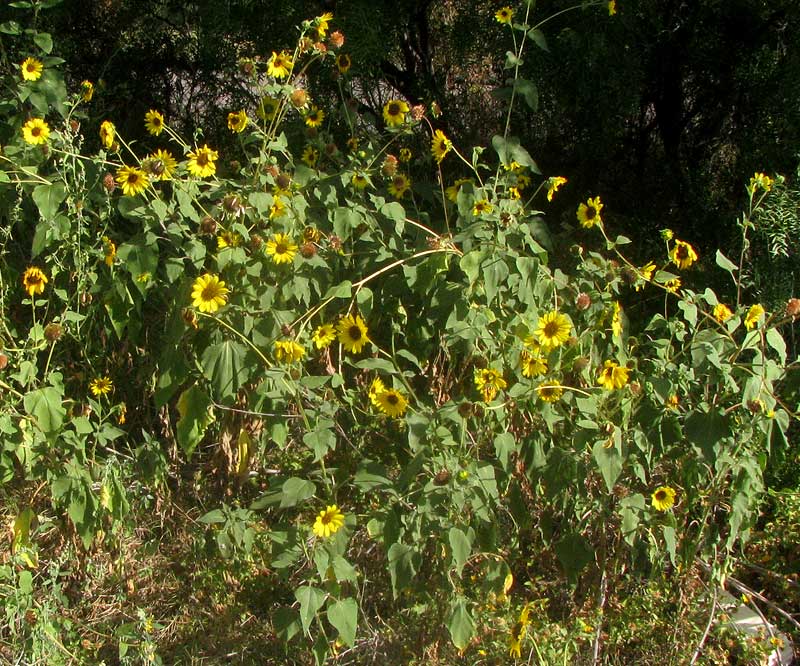
from the July 13, 2014 Newsletter issued from the Frio Canyon Nature Education Center in the valley of the Dry Frio River in northern Uvalde County, southwestern Texas, on the southern border of the Edwards Plateau; elevation ~1750m (~5750 ft); N29.62°, W99.86°; USA
COMMON SUNFLOWERS
Much less among the limestone hills of the upper Dry Frio Valley than down on the Coastal Plain where Uvalde sits, nowadays Common Sunflowers, HELIANTHUS ANNUUS, are abundant. They're up against fences where roadside mowers miss them, sometimes turning whole abandoned fields yellow with their pretty heads, and in town they grace almost every spot where people have for awhile held off with the mowing and herbicides. Above, you can see a handsome community about shoulder high next to a garbage bin behind a shopping center in Uvalde.
Of North America's 52 sunflower species -- sunflowers being species of the genus Helianthus -- maybe half a dozen might turn up in Uvalde County. Our Common Sunflower is tremendously variable in appearance, so how do we distinguish it from other species?
Common Sunflower leaves normally consist of blades that are broad at the bottom but narrowing to a point, and the blades arise from a well formed petiole, as shown below:
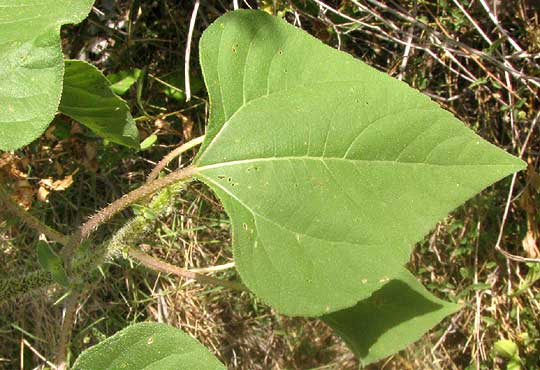
The pictures shows that both the stem and petioles bear stiff, straight hairs -- they're "hirsute." Another field mark is that the eye of the flower head is not yellow as in some sunflower species, but dark, as seen below:
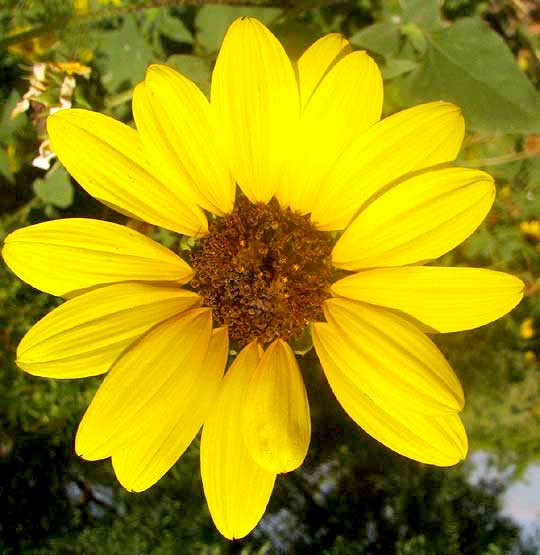
In that picture, the yellow "petals" are flat corollas of "ray flowers" while the dark eye consists of many closely packed "disc flowers" whose corollas, at least toward their tops, are purplish. A broken-open head showing this, as well as how the disc flowers suddenly inflate bladder-like at their bases, is seen below:
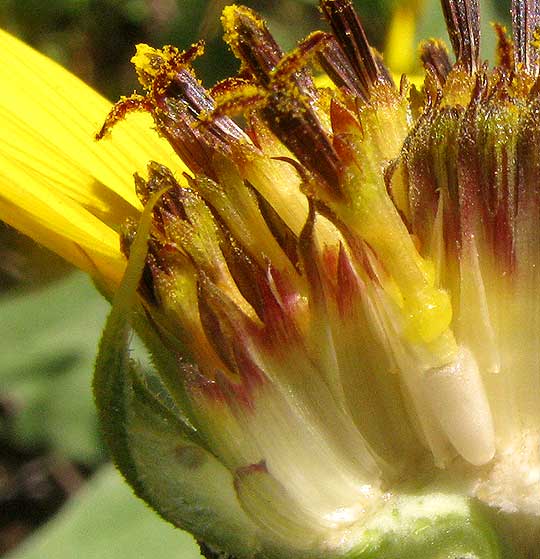
In that picture, the wedge-shaped, shiny, white object below the fully exposed disc flower at the right is the future cypsela-type fruit. It will mature into the item we think of as the sunflower seed, despite its being a one-seeded fruit.
The scaly, green "involucre" cupping the flowering head below consists of broad scales, or "phyllaries," that narrow suddenly to sharp slender tips. Notice that the phyllaries bear short, white hairs, or "cilia," along their edges, for many sunflower phyllaries lack such cilia. You can see the phyllaries below:
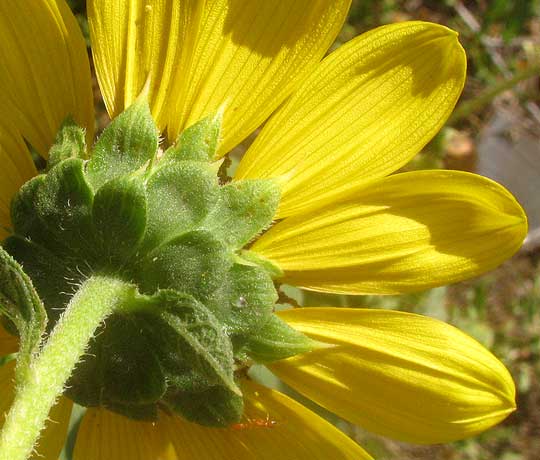
To practice using how these field marks distinguish Common Sunflowers from other sunflower species in our area, you might enjoy comparing our Common Sunflower with the Maximilian Sunflower we profiled earlier, found at http://www.backyardnature.net/n/h/maxi-sun.htm.
One last picture of our Common Sunflower shows its mature fruit in my hand, below:
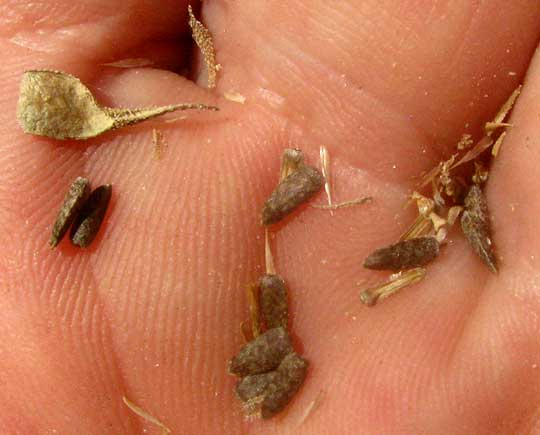
Compare the fruits' sizes to the width of my finger above them. It's hard to believe that from such tiny grains occurring in wild Common Sunflowers, human selective breeding has brought fourth the "sunflower seeds" in our bird feeders and in the grocery store. But, as the Flora of North America says of the Common Sunflower, "It is the only native North American species to become a major agronomic crop." Corn, or Maize, arose in Mexico.
Wild, native Common Sunflower occurs all across North America and through most of Mexico, plus it's been introduced into many countries nearly worldwide.